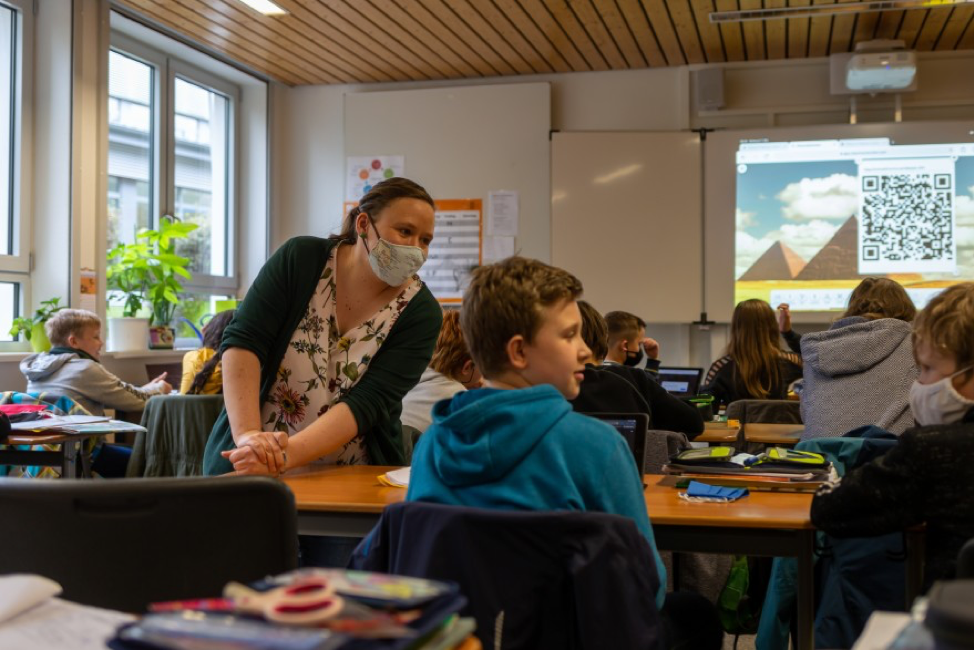
At Rainbowtrekkers kindergarten in Cologne, Germany, children sit in a circle without masks, singing, “Every day is new, and every day is different.”
But what isn’t different for these kids this year is their near-daily presence in a classroom.
For those parents in the U.S. whose children haven’t been in a school building since March, it’s hard to imagine that school anywhere could look like it did before the pandemic. The majority of parents of K-12 students are dissatisfied with the amount of education their children are receiving, according to the Pew Research Center. They’re watching coronavirus cases go up in Missouri and elsewhere and wondering if their kids’ schools will ever fully reopen.
German students, though, have been back in school since late spring. Germany acted decisively to reduce the number of COVID-19 cases so that children of all ages could make up for lost instructional time.
Jason Benedict, an American living in Berlin with his family, said it doesn’t feel like a “lost year” in Germany the way it does for some of his friends in the U.S.
“And I’m very thankful for that,” Benedict told St. Louis Public Radio.
Getting Back
Initially, German schools faced a lot of the same hurdles as schools in the U.S. Online learning was challenging in a country where some schools lacked digital infrastructure. There were privacy issues, too — students didn’t have school-issued email addresses, and most video conferencing platforms weren’t up to European data standards.
German parents reported their kids spent half as much time on coursework during the spring lockdown as they would’ve in school. They spent a lot more time on their phones instead.
Germany invested a lot of money into closing the digital divide. But perhaps more importantly, the country got students back in schools quickly. At first, they used a lot of the same precautions U.S. schools have taken — hybrid schedules, social distancing, mandatory masking.
Teachers said children had some issues sitting still in class or focusing when they first returned to school. Over time, though, those behavioral problems and the hygiene restrictions have eased. At the kindergarten in Cologne, children hug their teachers and share toys with friends.
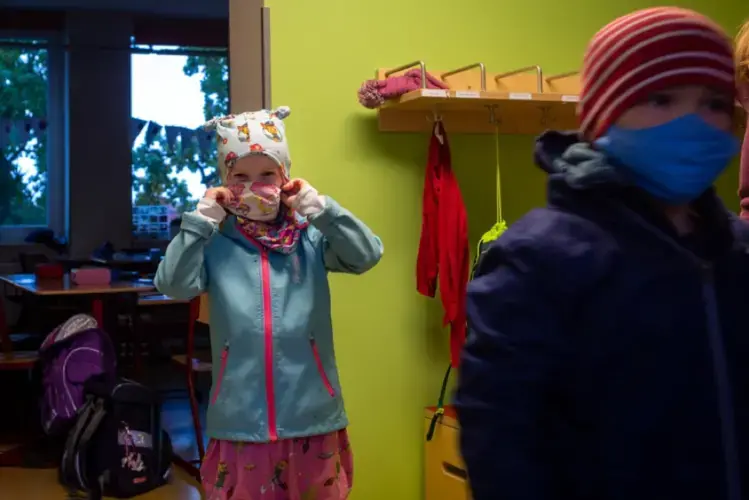
Still, Iva Sekulovic, the director of the Rainbowtrekkers kindergarten, worries about the long-term psychological impacts on young children learning to socialize during the pandemic.
“We can't imagine now how it will affect their social development. And I am a little bit, I have to say, afraid for this COVID-19 generation and how it will look like in 15 years,” she said.
Missing Out
In the U.S., where some of the most vulnerable students still aren’t back in school, those concerns are amplified. Parents and school leaders worry about losing an entire generation of students.
It’s definitely starting to feel like a lost year to Leslie Janis, who lives in Kansas City with her husband, Jesse, and their three kids, two of whom are school age. She expected to spend 2020 growing her business, a pop-up bakery that sells pie. Instead, she’s teaching her 7-year-old daughter, Lenora, to read.
“She fights me all day. She literally hates doing at-home school. She hates it,” Leslie told KCUR.
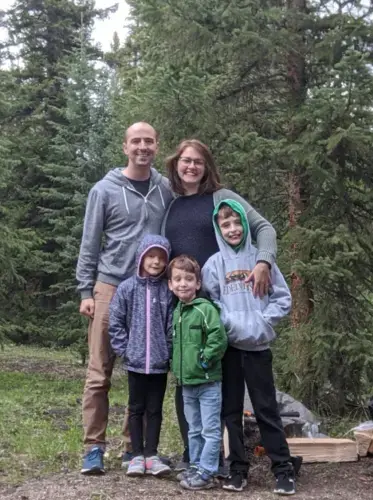
Lenora’s 10-year-old brother, Shepherd, actually likes online school. Every week, he gets a list of things to work on, and Leslie checks it over on Friday. She’s glad Shepherd can work independently because she has to spend so much time convincing his sister to do her schoolwork.
Jesse Janis said he knows his daughter is falling behind. He doesn’t blame her teachers at Citizens of the World, a charter school in Midtown. But at this point, she’s missed more than four months of school.
Citizens of the World wants to bring students back in January, but Leslie doesn’t think it’ll happen. Like a lot of moms who’ve had to put their careers on hold while her kids learn at home, she’s disappointed the U.S. hasn’t prioritized reopening schools the way other countries have.
“We even have friends who live in Italy where it was also really, really bad, and their kids are already all back in school,” she said.
Losing Out
A lost year of education can have a devastating long-term impact. The Organisation for Economic Cooperation and Development estimates each quarter of a year of lost education — half the time some American students have already been out of school — could reduce a person’s lifetime earning potential by 3%.
Andreas Schleicher, director of education at OECD, said countries that reopened bars and restaurants before getting the pandemic under control will regret prioritizing short-term economic interests over schools.
“I think that’s really very hard to justify versus the future generation,” Schleicher said. “We have given priority to people who live today and less to the ones who, you know, will be our future.”
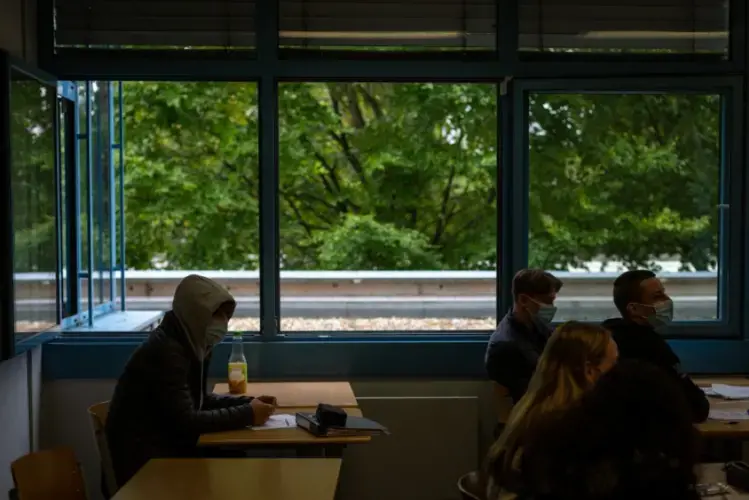
Eight months into the pandemic, school buildings in many U.S. cities are empty of students. In mid-October, just 16% of American school districts were providing full-time, in-person instruction, according to an Education Week survey. Attendance is down, too, regardless of the learning model.
Educators aren’t just worried about lost learning, they’re worried about lost kids. Bellwether Education Partners estimates 3 million American children nationwide haven’t attended any school since March. Globally, 24 million children could drop out of school, the United Nations Children’s Fund predicts.
Some of those missing students were enrolled in Kansas City Public Schools last year. Superintendent Mark Bedell has been sending counselors into the community to knock on doors in hopes of locating kids who haven’t logged on in months. It’s helping. Online attendance has improved from 55% to 80%, which is actually slightly better than it usually is for in-person school.
Still, Bedell knows virtual learning isn’t working for a lot of families. KCPS students live in some of the city’s poorest zip codes, and the pandemic has exacerbated income inequality for children of color and their families. Black unemployment remains in the double digits, even as the economy has regained jobs.
Bedell knows working parents need their kids to be in school. But every time the district makes plans to bring students back, COVID-19 cases start going up.
“And it just makes it difficult for me to feel confident and comfortable with bringing that many adults back into our buildings,” Bedell said.
School closures in Germany were also more harmful to students whose families are poor or don’t speak German fluently, said Katharina Spiess, who studies education and economics at the Free University of Berlin.
“We now have a situation where everybody is aware that this means that differences in education, education inequality, might increase,” she said.
Still, inequality is less pronounced in Germany than it is in the United States. Germany also has universal health care and the hospital capacity to treat coronavirus patients as Europe enters a second wave.
Reversing Course
Governments have ordered schools closed again in Italy, the Czech Republic and Poland. But Germany is trying to spare schools in a second round of lockdowns. Bars, restaurants, museums and gyms will be closed for the month of November, but not schools and child care centers.
There’s awareness by German parents that the normal schooling they’ve enjoyed so far this fall is increasingly precarious.
Juliet Cappetta, a single mom raising two sons in Berlin, is worried about what will happen if the pandemic isn’t brought back under control. Her 16-year-old son did fine with online learning last spring. But her younger son, who has a learning disability, really struggled.
“Literally he did nothing,” Cappetta said. “The problem is, I haven't got the time to help him. I work eight hours a day.”
Parents in Missouri also worry that another round of school closures is inevitable. Kathryn Atchley lives in Lee’s Summit with her husband and 7-year-old son, Parker, who has special needs.
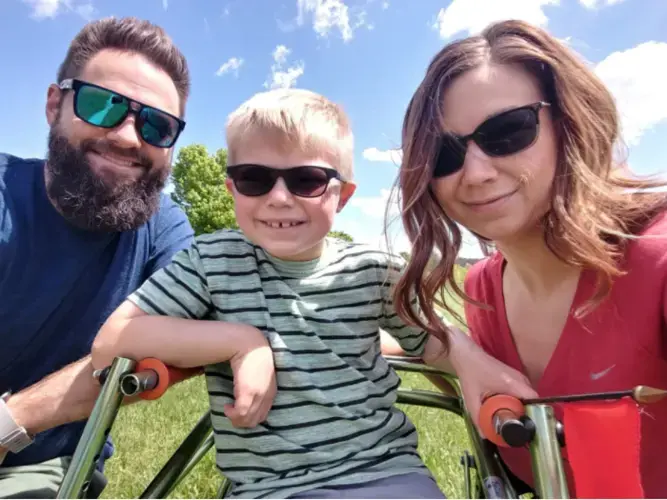
“I’ve been very frustrated with just the lack of a unified, science-driven approach to managing the pandemic because Parker and all the kids like him who rely on school, not just for special education, but services that he’s getting to help him hold onto those skills he’s trying so hard to build,” Atchley said.
Parker has KIF1A, a neurological disorder so rare that his doctors don’t actually know if he’s at increased risk for COVID-19. They’ve told Atchley to act like he is, so at first she enrolled him in online school even though Lee’s Summit was offering in-person classes.
But when Parker’s teachers and therapists would log in to work with him, he would grab the computer screen and try to close it. So in mid-September, the Atchleys decided to give in-person school a try. Kathryn is so glad they did.
“So actually just the first time ever in his life, he told me about a friend that he made at school. He kept saying, ‘Fun, fun, friend, friend,’ and then said his friend's name,” Atchley said, tearing up. “That is huge.”
And it never would’ve happened in a Zoom classroom.
Ryan Delaney and Elle Moxley are reporting on the impact of the coronavirus on German and Missouri schools through an Education Writers Association fellowship, with additional support from the Pulitzer Center.
COVID-19 Update: The connection between local and global issues–the Pulitzer Center's long standing mantra–has, sadly, never been more evident. We are uniquely positioned to serve the journalists, news media organizations, schools, and universities we partner with by continuing to advance our core mission: enabling great journalism and education about underreported and systemic issues that resonate now–and continue to have relevance in times ahead. We believe that this is a moment for decisive action. Learn more about the steps we are taking.
- View this story on St. Louis Public Radio












